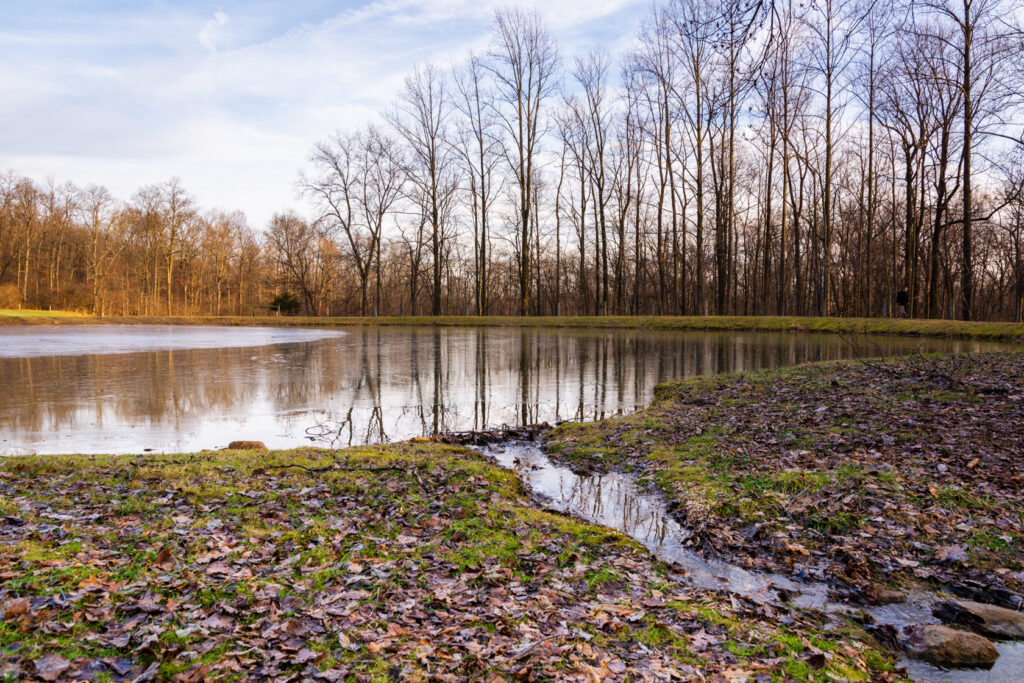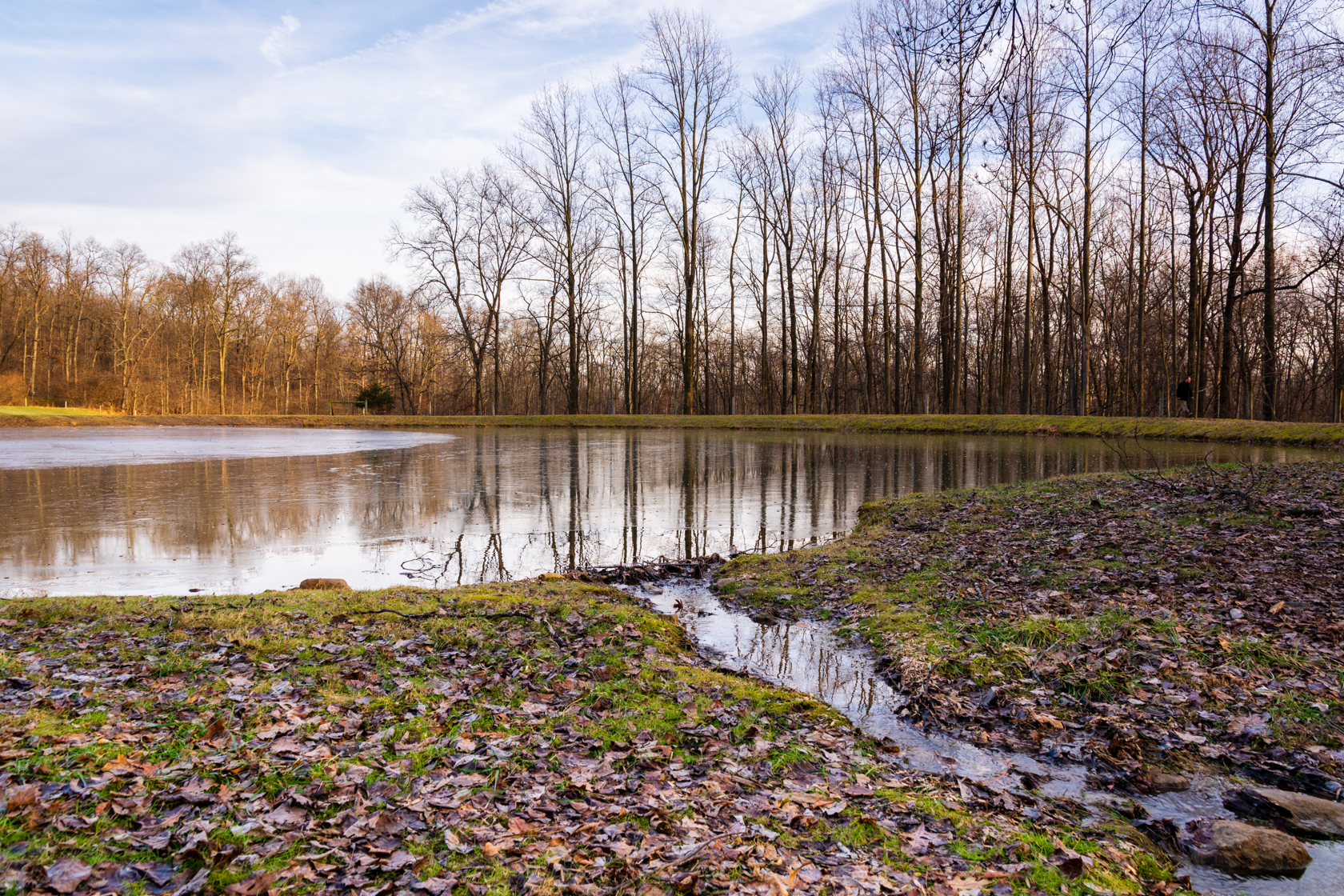The Conestoga River meanders for sixty miles through the fertile farmlands of Lancaster County. From early Native American inhabitants to the European settlers who made the Conestoga Valley their home, the river has provided sustenance and transportation for generations. Victorian era resorts and hotels were built along the river, providing new recreational activities as steam power drove innovative forms of transportation and waterpower. As the region developed and the population grew, the river paid a heavy price in increased pollution from sewage runoff and industry. Conservation efforts toward the end of the twentieth century through the present day have restored the river’s beauty and recreational reputation.
This is the first article in a series of four which are taken from my book, “The Conestoga River: A History”. In these articles we will take a journey through time on the historic waters of the Conestoga River.
Conestoga Watershed
The Conestoga River is a 61.6-mile-long tributary of the Susquehanna River. It originates in Berks County but most of its length is in Lancaster County. It enters the Susquehanna at Safe Harbor just below the Safe Harbor dam. Originally known as the Conestogoe or Conestogo, its name is derived from the Iroquoian word “Kanastoge” meaning “place of the immersed pole”.
The Conestoga and its tributaries drain approximately 217 square miles. The principal tributaries of the Conestoga are Cedar Creek, Muddy Creek, Cocalico Creek, the Lititz Run, the Mill Creek, and the Little Conestoga. The Conestoga has an “inverted” profile, meaning that it starts out with a gentle slope and slope increases as it approaches its mouth. The Conestoga and its sister stream the Pequea Creek form a double watershed system. The Conestoga and Pequea with their tributaries drain most of Lancaster County.
The headwaters of the Conestoga are made up of two branches. The West branch begins in a pond on the edge of the Pennsylvania State Games Lands #52 north of the Pennsylvania Turnpike, north-east of Morgantown. The East Branch begins somewhere just north of Elverson. The two branches join at a point along Mill Road just south of Morgantown.

Creek or River?
Before we go any further, we must ask the question, “Is the Conestoga a creek or is it a river?” People who grew up along its banks and fished or swam in its waters often prefer to call it the Conestoga Creek. Or simply, the “crick”. However, the signs along the major highways that cross the Conestoga label it the “Conestoga River”. And recently, the Conestoga was nominated for 2023 River of the Year by The Pennsylvania Organization for Watersheds and Rivers. So, which is it? A creek or a river?
(The River of the Year designation for 2023 was awarded to the North Branch of the Susquehanna.)
In 1824, Captain Ephraim Beach surveyed the Conestoga from Lancaster to Safe Harbor for the purpose of making the Conestoga navigable. Beach produced a map indicating the plans for a system of locks and canals that would enable canal boats to make the trip from Lancaster to the Susquehanna. This map may be viewed at the Lancaster Historical Society. The legend on that map calls it the “Conestogo River”. Of course, Captain Beach was promoting the Conestoga as a commercial waterway, so the river designation seemed more appropriate for that purpose.
In 1912, Frank R. Diffenderfer, who was an associate editor of the Lancaster New Era newspaper and one of the founders of the Lancaster Historical Society, wrote an impassioned plea on behalf of the Conestoga River. Here is an excerpt from his “Plea for the Conestoga River” that was read before the Lancaster Historical Society:
“One of the most beautiful streams in the world flows quietly through the green meadows and along the sunny braes of Lancaster County for a distance of more than sixty miles, draining a territory 315 square miles in area, affording endless themes of beauty to the brush of the painter and the fancy of the poet.”
“It is the Conestoga ‘Creek’ to most of our people ‘and it is nothing more’; yet it is a river, just as truly as are some of the most noted streams of the world which have been called rivers for thousands of years.”
“Our Conestoga has borne its present misnomer long enough. Let no member of this Society ever again speak or write about it as a ‘creek.’ Call it what it really is, and what it deserves to be called – The CONESTOGA RIVER.”
Earl F. Rebman, founder of the Conestoga Valley Association, fought for 28 years to fulfill Diffenderfer’s plea. Finally, in April of 1974, Rebman’s dream was fulfilled when the United States Board of Geographic Names approved the name “Conestoga River” for federal use. The main branch of the Conestoga including the East and West branches at its source were included in the approval. The Little Conestoga, however, remains a creek. (Lancaster New Era, April 24, 1974)
Presettlement Conditions
Prior to the arrival of European settlers in the 17th century, the Conestoga Valley was much different than it is today. The valley was more like a swamp than the single channel that we know today. The valley was made up of numerous, interconnected streams that flowed around islands of vegetation. The system was resistant to flooding because the flood plains were broad and marshy, and the underlying soil was porous.The historic floodplain was full of vegetation with root systems that held the soils in place even during high water flow.

The area is part of the Pennsylvania Piedmont lowlands. This area was once covered with a shallow sea. Various species of shellfish lived and died in the sea, their discarded shells building up to create great sheets of limestone. Eventually tectonic forces pushed up to form the Appalachian Mountains. Over time, these mountains eroded forming deep, rich soil in the alluvial valleys. This, in turn, enabled great forests to grow and the forests provided the habitat for abundant wildlife. Bear, deer, elk, foxes, otters, raccoons, wildcats, wolves, and the much-coveted beaver all made their home in the forests and wetlands of the Conestoga Valley.
The Conestogas
The Susquehannock Indians appeared along the Susquehanna c1550 at about the time that an earlier group who are known as the Shenk’s Ferry people disappeared. It is unknown whether the earlier group died of an illness or if the Susquehannocks conquered or assimilated them. The Susquehannocks were mostly nomadic hunters and fisherman who would stay in one area only so long as the game and fish remained plentiful. They were not very friendly to members of other tribes and would regularly send out war parties to attack the hunters from other tribes who happened into their territory. By 1608, the Susquehannocks had a town and stockade fort on the shore of the Susquehanna at the foot of Turkey Hill.

In the summer of 1608, Captain John Smith encountered a hunting party of Susquehannocks at the head of the Chesapeake Bay. Captain Smith described them as more muscular and larger in stature than other natives that he had seen. Smith said, “They seemed like giants, and were the strangest people in all these countries, both in language and attire; their language well becomes their proportions, sounding ‘from them as a voice in a vault. The Susquehannocks were called “Minquas” (treacherous) by the Delaware (Lenape).
In the mid-1600s, pressure from the Dutch Trading Company forced the Senecas south into Susquehannock territory. This resulted in violent inter-tribal conflicts. The Senecas fought the Susquehannocks as far south as the Chesepeake Bay. The Susquehannocks pleaded for assistance from the English colonial settlements but did not receive the level of aid that they needed to ward off the Seneca attacks. By the late 17th century, the ranks of the Susquehannocks were severely decimated and they no longer held the importance that they once commanded. Soon after this, the remnant left their fort on the river shore and moved to their town on Turkey Hill about four miles further up the hill. Once established at this new location they became known as the Conestogoes. Here William Penn granted them 500 acres of land that became known as “the manor”, today it is Penn Manor Township.
Fast forward a hundred years or so into the mid-18th century and you find the European settlers engaging in their own inter-tribal conflicts. The English went to war with the French over territorial disputes. A few of the native peoples joined up with the French under the vague promise that they might be able to recover their land if the English were defeated. The Conestogoes had become extremely destitute by this time, many of them had little clothes to wear. They went from farm to farm begging for food or bartering for it with reed baskets and brooms. Alcoholism was rampant. When the white inhabitants of the upper Susquehanna, having fled their homes, came into Lancaster County and Philadelphia, the suspicions against the Conestogos grew with each new story of the atrocities that were committed upriver. The Conestogos at this time were afraid to leave the manor even to hunt for food.
The French and Indian war ended in 1758 but an uprising by chief Pontiac in 1763 caused animosities to rise again against the small tribe. On December 13, 1763, a company of men from Paxtang, Hanover, and Donegal headed to Conestoga Indian Town to destroy the place and its people. Early the next morning they attacked the town, killed, and scalped four men and two women and burned the town. A boy escaped and alerted the manager of the tragedy. The Lancaster authorities gathered up the remaining Conestogos (fourteen in number) and housed them in the city workhouse for their protection. But then on December 27, about fifty or sixty men armed with rifles and tomahawks appeared suddenly in the town about 2:00 in the afternoon, broke into the workhouse and killed the fourteen Conestogos in the courtyard behind the jail. The Conestogos are no more, but their memory remains in the river that bears their name.
The next article in this series will delve into the colonial settlement period of the Conestoga’s history. If you would like a copy of my book, you may order one on my website at www.donaldkautz.com.
For Further Reading:
Brubaker, Jack, Massacre of the Conestogas, The History Press, 2010
Minderhout, David J., Native Americans in the Susquehanna River Valley, Past and Present, Bucknell University Press, 2013
Merrell, James H., Into the American Woods, W. W. Horton & Company, 1999
